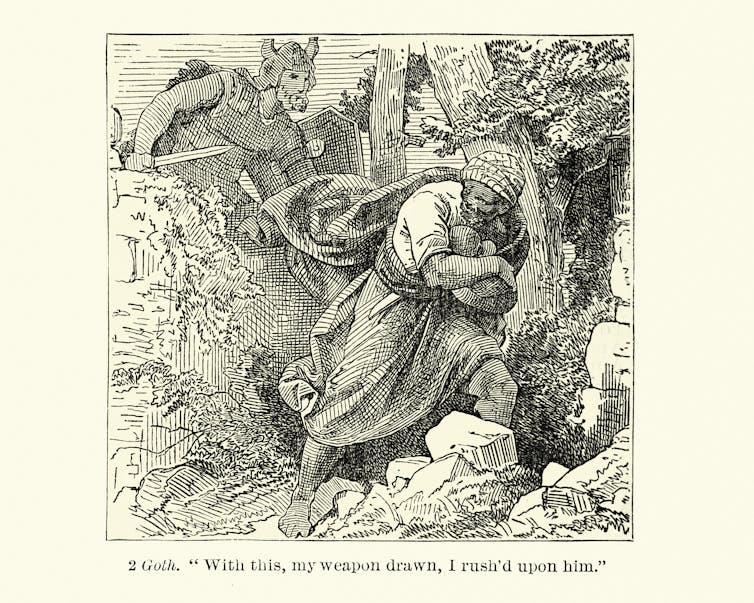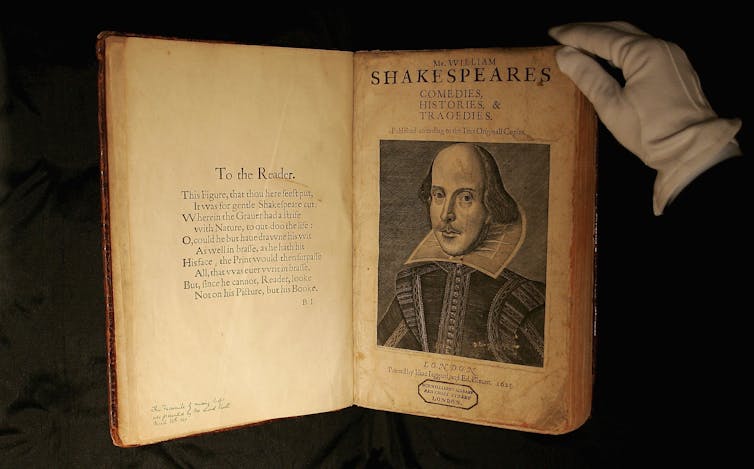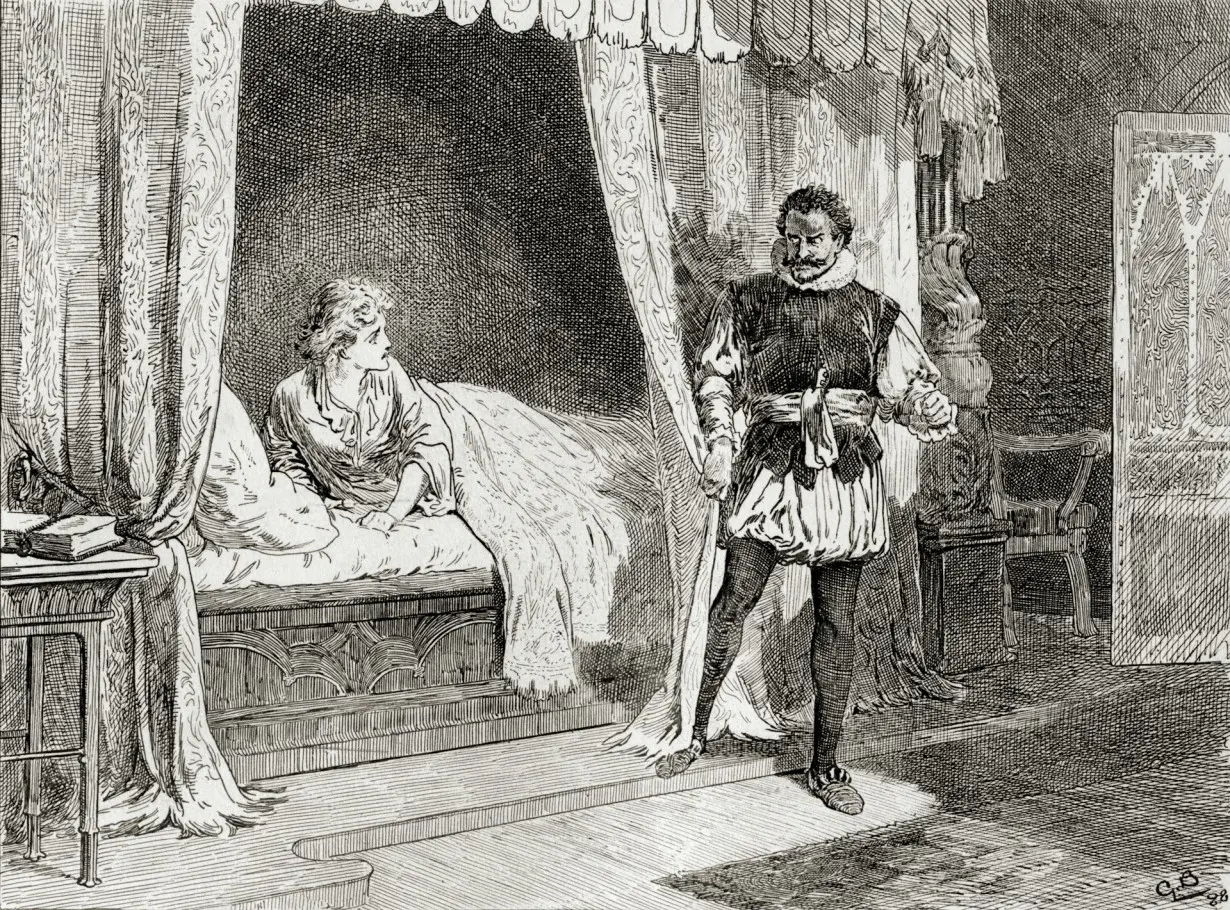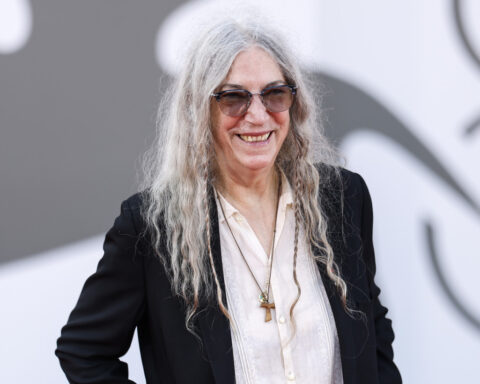William Shakespeare’s famous tragedy “Othello” is often the first play that comes to mind when people think of Shakespeare and race. And if not “Othello,” then folks usually name “The Merchant of Venice,” “Antony and Cleopatra,” “The Tempest,” or his first – and bloodiest – tragedy, “Titus Andronicus,” my favorite Shakespeare play.
Among Shakespeare scholars, those five works are known as his traditionally understood “race plays” and include characters who are Black like Othello, Jewish like Shylock, Indigenous like Caliban, or Black African like Cleopatra.
But what did Shakespeare have to say about race in plays such as “Hamlet” and “Macbeth,” where Black characters do not have a dominant role, for example?
As Shakespeare scholars who study race know, all of his plays address race in some way. How could they not?
After all, every human being has a racial identity, much like every living human being breathes. Said another way, every character Shakespeare breathed life into has a racial identity, from Hamlet to Hippolyta.
The playwright wrote about many key subjects during the late 15th and early 16th centuries that are relevant today, including gender, addiction, sexuality, mental health, social psychology, sexual violence, antisemitism, sexism and, of course, race.
In my book “Shakespeare’s White Others,” I explore the intraracial divisions that Shakespeare illustrates in all his plays.
Here are four things to know about Shakespeare and race.
1. No one should fear Shakespeare
For a long time, I was afraid of Shakespeare. I am not the only one.
In his 1964 essay “Why I Stopped Hating Shakespeare,” James Baldwin detailed his initial resistance. Like many people today, Baldwin wrote that he, too, was “a victim of that loveless education which causes so many schoolboys to detest Shakespeare.”
A major part of Baldwin’s loathing of Shakespeare had nothing to do with the English writer specifically, but rather the white elitism that surrounded his work and literature.
But as Baldwin eventually realized, Shakespeare was not the “author of his oppression.”
Just as Shakespeare didn’t create misogyny and sexism, he didn’t create race and racism. Rather, he observed the complex realities of the world around him, and through his plays he articulated an underlying hope for a more just world.
2. Shakespeare’s work reveals social injustice
“Titus Andronicus” featured the playwright’s first Black character, Aaron. In that play, written near the end of the 16th century, the white Roman empress, Tamora, cheats on her white emperor husband, Saturninus, with Aaron. When Tamora eventually gives birth to a baby, it’s clear Tamora’s baby daddy isn’t Saturninus.
Consequently, the white characters who know about the infant’s real father urge Aaron to kill his newborn Black son. But Aaron refuses. He opts instead to fiercely protect his beloved child.

Vintage engraving of a scene from Shakespeare’s ‘Titus Andronicus.’
Amid all the drama that occurs around the child’s existence, Shakespeare momentarily offers a beautiful defense of Blackness in the play’s fourth act.
“Is black so base a hue?” Aaron initially asks before challenging the cultural norm. “Coal-black is better than another hue, in that it scorns to bear another hue.”
In other words, at least to Aaron, being Black was beautiful, Blackness exuded strength.
Such words about the Black identity are not uttered elsewhere in Shakespeare’s plays – not even by the more popular Othello.
3. The power of whiteness
In plays such as “Hamlet,” “Macbeth” and “Romeo and Juliet,” race still figures in the drama even when there are no dominant Black characters.
Shakespeare does this by illustrating the formation and maintenance of the white identity. In a sense, Shakespeare details the nuances of race through his characters’ racial similarities, thus making racial whiteness very visible.

An image of what is considered the most important book in English literature, William Shakespeare’s ‘The First Folio 1623.’
In Shakespeare’s time, much like our present moment, the presumed superiority of whiteness meant social status was negotiated by everyone based on the dominant culture’s standards.
In several of his plays, for instance, the playwright uses “white hands” as noble symbols of purity and white superiority. He also called attention to his character’s race by describing them as “white” or “fair.”
Shakespeare also used black as a metaphor for being tainted.
One such moment occurs in the comedy “Much Ado About Nothing.”
A young white woman, Hero, is falsely accused of cheating on her fiancé. On their wedding day, Hero’s groom, Claudio, charges her with being unfaithful. Claudio and Hero’s father, Leonato, then shame Hero for being allegedly unchaste, a no-no for 16th-century English women who were legally their father’s and then their husband’s property.
With Hero’s sexual purity allegedly tainted, her father describes her as having “fallen into a pit of ink.”
Sex before marriage violated the male-dominated culture’s expectations for unwed white women.
Thus, in that play, Hero momentarily represents an “inked” white woman – or a symbolic reflection of the stereotyped, hypersexual Black woman.
4. The future of scholarship on Shakespeare and race
Today, scholars are publishing new insights on the social, cultural and political issues of Shakespeare’s time and our own. In fact, there are dozens of scholars and theater practitioners devoting their professional lives to exploring race in Shakespeare’s literature and time period.
In his 2000 book “Shakespeare Jungle Fever: National-Imperial Re-Visions of Race, Rape, and Sacrifice,” UCLA English professor Arthur L. Little Jr. explored British imperialism, racialized whiteness and the sexual myths about Black men.
In 2020, playwright Anchuli Felicia King wrote “Keene,” a satirical riff on “Othello” that offers a modern-day critique on whiteness. In “Keene,” Kai, a Japanese musicologist, and Tyler, a Black Ph.D. student, meet at a Shakespeare conference where they are the only two people of color at the elite white gathering. While Tyler is focused on writing his thesis, Kai is focused on Tyler. A romance ensues, only to see Tyler – much like Othello before him – betrayed by his closet white confidant, Ian.
In 2019, British actress Adjoa Andoh directed Shakespeare’s “Richard II” with a cast of all women of color – a production that she called “a thought experiment into the universality of humanity.”

David S. Brown receives funding from Mellon Foundation and American Council of Learned Societies.
Source: The Conversation

 Trump has begun another trade war. Here's a timeline of how we got here
Trump has begun another trade war. Here's a timeline of how we got here
 Canada's leader laments lost friendship with US in town that sheltered stranded Americans after 9/11
Canada's leader laments lost friendship with US in town that sheltered stranded Americans after 9/11
 Chinese EV giant BYD's fourth-quarter profit leaps 73%
Chinese EV giant BYD's fourth-quarter profit leaps 73%
 You're an American in another land? Prepare to talk about the why and how of Trump 2.0
You're an American in another land? Prepare to talk about the why and how of Trump 2.0
 Chalk talk: Star power, top teams and No. 5 seeds headline the women's March Madness Sweet 16
Chalk talk: Star power, top teams and No. 5 seeds headline the women's March Madness Sweet 16
 Purdue returns to Sweet 16 with 76-62 win over McNeese in March Madness
Purdue returns to Sweet 16 with 76-62 win over McNeese in March Madness








